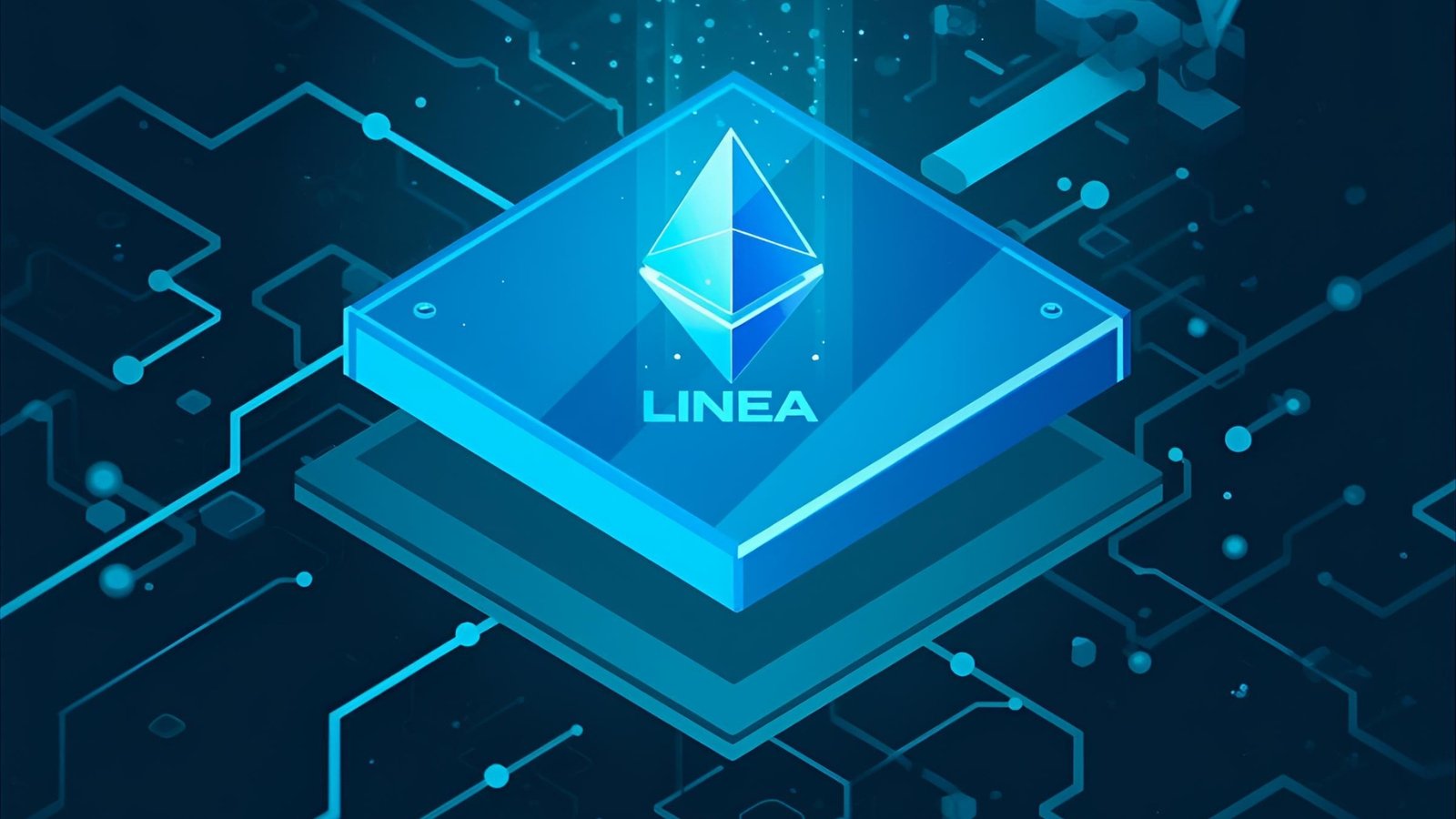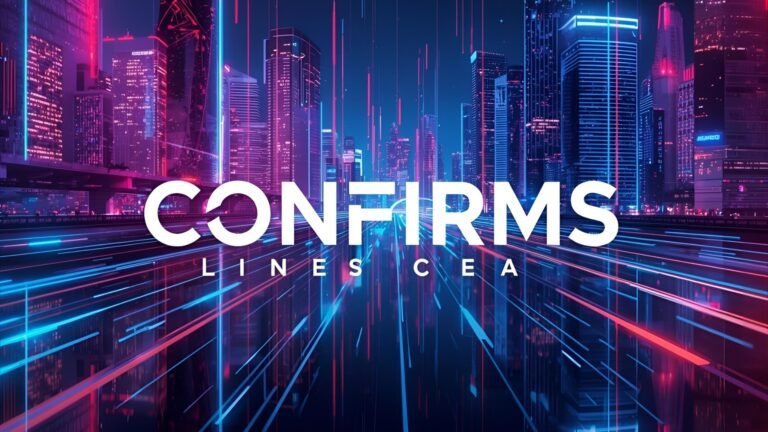The world’s biggest financial messaging cooperative just took a decisive step into blockchain payments. In late September, SWIFT announced a plan to add a blockchain-based shared ledger to its infrastructure—designed for instant, always-on, cross-border settlement—and named ConsenSys as the technology partner building its conceptual prototype. Days later, ConsenSys CEO Joe Lubin publicly confirmed that SWIFT’s new settlement rail will run on Linea, the Ethereum Layer-2 zkEVM developed by ConsenSys. Together, the announcements mark the most consequential convergence yet between TradFi rails and the Ethereum ecosystem.
It’s hard to overstate the significance. SWIFT connects more than 11,000 financial institutions across 200+ countries, moving over $150 trillion in value each year. If even a fraction of that flow shifts to on-chain settlement—with Linea providing the execution environment—the ripple effects across cross-border payments, stablecoins, CBDCs, and tokenized assets could be profound. Just as importantly, SWIFT’s plan emphasizes interoperability with existing and emerging networks, reflecting its prior pilots bridging to public chains through Chainlink CCIP. In other words, this is not a walled garden; it’s a bridge from bank infrastructure to open blockchain ecosystems.
What SWIFT announced and what Linea confirms
On September 29, 2025, SWIFT revealed it will add a blockchain-based shared ledger to its technology stack, initially targeting 24/7, real-time cross-border payments at a global scale. The cooperative also said it is building this with more than 30 leading financial institutions, while ConsenSys develops the prototype. Crucially, SWIFT’s press materials did not name the specific blockchain; that detail emerged publicly when Joe Lubin stated at TOKEN2049 Singapore that the platform will run on Linea. Taken together, the two pieces establish both the scope (a shared ledger for payments) and the execution layer (Linea).
This sequencing matters. SWIFT’s neutral stance in official materials preserves optionality and the ability to interoperate across networks (something it has tested with Chainlink). Lubin’s on-stage confirmation clarifies where the first production-grade rails will likely execute: on an Ethereum L2 purpose-built for institutional needs—privacy, throughput, cost control, and regulatory alignment.
Why Linea The case for an Ethereum Layer-2

Linea is a zkEVM rollup that inherits Ethereum’s security while providing dramatically lower fees and faster finality. For banks, that translates into a familiar EVM development model, deterministic settlement, and a clear upgrade path as zero-knowledge proving systems continue to improve. In practice, a zkEVM can offer:
-
Near-instant confirmations with finality anchored to Ethereum
-
Privacy-preserving proofs that help protect sensitive transaction data
-
EVM compatibility, letting ecosystems reuse tooling, audits, and developer skill sets
Institutional adoption is not just about throughput; it’s about operational risk, compliance, and maintainability. An Ethereum-aligned stack eases those burdens while unlocking smart-contract programmability for corporate actions, treasury flows, and on-chain FX. It’s a pragmatic choice for a network serving systemically important banks.
From messaging to settlement: what changes
Historically, SWIFT orchestrated secure messaging between banks; the actual movement of money happened off-chain across correspondent banking relationships. A blockchain-based settlement rail collapses that back-and-forth. With tokenized deposits, bank stablecoins, or other regulated tokens, the “message” and the “movement” can occur in a single atomic transaction. That reduces reconciliation, slashes operational errors, and can compress T+2 frictions down to T+seconds for the payment leg.
SWIFT’s own roadmap underscores this shift: it aims to power an “instant, always-on” experience and has been explicit about connecting multiple digital networks—public and private—rather than forcing uniformity. Earlier pilots with Chainlink demonstrated proofs of moving tokenized assets across varied chains via CCIP, showing how SWIFT can act as a single point of entry into a multi-chain future. The new Linea-based rail is a logical next step from proof-of-concept to an executable settlement path.
Interoperability is strategy, not a buzzword
Key to SWIFT’s posture is refusing to pick one chain to rule them all. Even with a Linea execution layer, the cooperative continues to invest in interoperability tooling. SWIFT’s 2023 tokenization experiments used Chainlink as an abstraction layer to bridge to public networks, and its 2024 announcements discussed moving from experiments to live trials of digital asset transactions. The throughline: a network-of-networks where banks connect once to SWIFT and reach many ledgers, including public chains.
That design aligns with how banks procure infrastructure: they value vendor neutrality, redundancy, and failover more than single-vendor lock-in. A Linea rail inside a SWIFT-managed architecture can therefore coexist with private chain pilots, CBDC corridors, and tokenized market infrastructures.
How a SWIFT-Linea settlement flow might work
Imagine a European bank paying an Asian supplier after business hours. Today, the payment might wait until local RTGS systems reopen, with intra-day liquidity and cut-off times complicating cash positioning. On a Linea rail, the payer’s bank could transfer tokenized commercial bank money or a bank-issued stablecoin to the beneficiary’s bank on-chain, with the movement settled in seconds and availability guaranteed 24/7/365. Smart contracts handle FX, fees, and sanctions checks via oracles; zero-knowledge attestations provide compliance proofs without revealing sensitive counterparty data.
Because the rail is EVM-compatible, banks can extend flows to invoices, purchase orders, and escrow logic. For example, the funds might only release once an IoT oracle confirms the container reached a specific port, or once a digital bill of lading posts to a tokenized trade finance platform. The result is not merely faster wires; it’s programmable settlement.
Compliance, privacy, and ISO 20022 alignment
SWIFT’s enduring value is standardization and compliance. The cooperative already shepherded the industry into ISO 20022. A Linea-based rail can map on-chain events to ISO 20022 data structures, preserving compliance semantics while enriching them with verifiable proofs. Meanwhile, zk techniques allow selective disclosure: a bank might prove it screened a transaction against updated sanctions lists without sharing the lists themselves on-chain.
SWIFT’s prior pilots stressed regulatory-grade interoperability: keeping existing bank controls and auditability intact while bridging to new rails. That theme persists here—this isn’t crypto anarchy; it’s regulated, attestable, and monitorable settlement with the transparency and immutability of blockchain.
What this means for banks and payment providers
For banks, a SWIFT-managed blockchain settlement platform reduces the need to build, secure, and audit their own L2 stacks while giving them access to the Ethereum developer ecosystem. Treasury teams can manage on-chain liquidity, optimize nostro/vostro balances, and reconcile positions in real time. Payment providers and fintechs get a de-risked path to embed on-chain settlement without abandoning SWIFT connectivity.
There’s also a competitive angle. Ripple’s XRP Ledger long positioned itself as an interbank settlement alternative. A Linea-based SWIFT rail reframes the debate: banks don’t have to leave SWIFT to settle on a blockchain; they can do it through SWIFT, gaining both speed and familiar governance. Lubin himself noted the sentiment from the banking sector as “it’s about time,” a nod to pent-up demand for unified TradFi-DeFi rails.
Timelines, pilots, and going live
SWIFT’s press release outlines a phased approach: prototype with ConsenSys, run with a cohort of 30+ institutions, and expand functionality from real-time payments to other tokenized use cases. This builds on a 2024–2025 progression in which SWIFT moved from experiments to live trials of digital asset and currency transactions, signaling readiness to evolve beyond PoCs toward production-grade traffic.
Banks should expect limited-scope pilots first—narrow corridors, capped volumes, restricted asset types—before broader rollout. Because the settlement layer is programmable, new features can arrive incrementally: atomic PvP, escrow automation, on-chain FX, and instant confirmation hooks back into core banking ledgers.
Also Read: Best Bitcoin News API Subscription Plans 2024 Complete List
Risks and open questions
No transformation of this size is frictionless. Key risks include:
Regulatory clarity. Jurisdictions differ on the treatment of tokenized deposits, e-money, and stablecoins. SWIFT can harmonize processes, but not laws. Banks must navigate capital, liquidity, and reporting requirements for on-chain balances.
Operational risk and security. A zkEVM rollup concentrates critical logic in smart contracts and sequencers. While Ethereum’s security model is robust, banks need disaster recovery, key management, and unlikely-but-high-impact contingency plans.
Data protection. Even with zero-knowledge proofs, metadata can leak patterns. Banks will demand tools for privacy-preserving analytics and a granular approach to KYC/AML attestations.
Interoperability complexity. SWIFT’s embrace of multi-network connectivity is powerful—but every bridge adds governance and failure modes. Banks will push for standards-based connectors and strong service-level agreements across providers.
How developers and enterprises can prepare

For developers, this shift creates demand for EVM-native payment primitives with bank-grade guarantees. Opportunities include: ISO 20022-aware smart-contract schemas, compliance oracles, on-chain reconciliation modules, and treasury dashboards that model intraday liquidity across on- and off-chain balances.
Enterprises should start by mapping existing AP/AR flows to programmable settlement patterns. Where are chargebacks, disputes, or documentary trade issues most frequent? Those pain points often benefit most from conditional payments and event-driven release of funds. Integration teams will want to test webhooks from the Linea rail back into ERP and TMS systems, aligning on-chain finality with internal posting and reporting.
The bigger picture: tokenized value and a network of networks
SWIFT’s 2023 tokenization work showed that banks can move tokenized value across multiple chains using existing SWIFT connectivity. The move to a Linea settlement rail doesn’t abandon that; it anchors one high-throughput, zk-secured lane while leaving open the ability to interoperate with other public and private ledgers. Over time, expect SWIFT to support asset-specific flows: securities settlement messages that trigger delivery on a permissioned DLT, or cross-chain corporate actions executed via CCIP with SWIFT as the orchestrator.
This “network-of-networks” vision reflects how the internet itself scaled: not by one perfect backbone, but by interconnected domains, each optimizing for different needs yet speaking common protocols. SWIFT brings the governance, standards, and reach; Linea contributes programmability, scalability, and zk privacy; Chainlink and others provide interoperability glue. The outcome could be a composable financial internet where banks transact across borders as easily as apps call APIs.
Market reaction and industry implications
Unsurprisingly, crypto media and industry watchers responded quickly, framing the shift as a direct competitive shot across the bow of Confirms Linea Blockchain. Reports highlighted the potential for on-chain stablecoin settlement and noted that major banks are already in the early cohort. While headlines can get ahead of reality, the signal is unambiguous: blockchain settlement is no longer an experiment at the edges; it’s entering the core payment stack through the most systemically important network in finance.
Banks that once viewed public chains warily now have a SWIFT-blessed path to test and adopt Ethereum-aligned infrastructure. For fintechs, expect a wave of bank-grade APIs that expose on-chain settlement as a service. For regulators, the focus will turn to supervision in real time—auditing programmatic flows at machine speed.
Bottom line
By selecting Linea—and doing so in a way that preserves interoperability—SWIFT is turning a decade of blockchain testing into an actionable payment settlement platform. The combination of SWIFT’s reach, Linea’s zkEVM advantages, and prior inter-chain learnings creates a credible path to instant, compliant, programmable cross-border payments. The story is still unfolding, but the direction is clear: global payments are moving on-chain, and SWIFT intends to lead that evolution.
FAQs
Did SWIFT officially name Linea in its press release?
SWIFT’s September 29, 2025 press release announced a blockchain-based shared ledger and identified ConsenSys as the prototype partner, but it did not name a specific chain. Joe Lubin, ConsenSys’ CEO, publicly confirmed days later that Linea will power the new settlement rail. Together, these statements establish the picture: SWIFT’s platform with Linea as the execution layer.
How is this different from past SWIFT blockchain experiments?
Earlier initiatives focused on tokenization interoperability, often via Chainlink CCIP to connect multiple blockchains from a single SWIFT interface. The new move adds a production-oriented settlement rail on Linea, which goes beyond messaging to actual on-chain movement of value for cross-border payments.
What will settle on the Linea rail—stablecoins, tokenized deposits, or CBDCs?
SWIFT emphasizes regulated tokenized value, which can include tokenized deposits, bank stablecoins, and potentially CBDC corridors where central banks permit it. The initial focus is real-time payments, with scope to expand based on pilot outcomes and jurisdictional rules.
Will this replace existing SWIFT gpi or correspondent banking?
Not immediately. SWIFT is upgrading existing rails while creating future digital rails in parallel. Expect coexistence: banks will continue to use SWIFT’s traditional messaging where appropriate while progressively adopting on-chain settlement for corridors and use cases where it delivers clear benefits.
When might banks see this in production?
SWIFT has moved from experiments to pilots and live trials across 2024–2025. The Linea prototype and bank cohort will determine the path to scaled rollout. Timelines will vary by jurisdiction, asset type, and bank readiness, but momentum toward real-world application is unmistakable.


